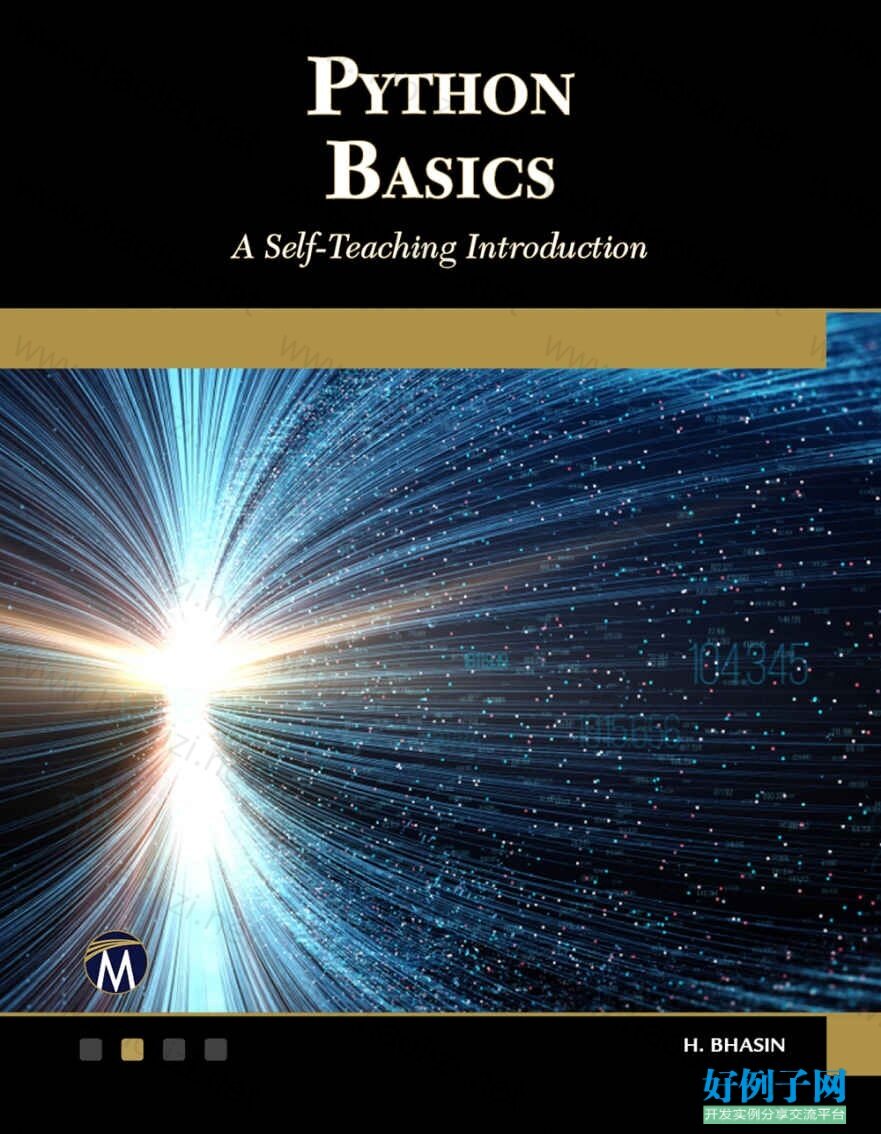实例介绍
【实例简介】
【实例截图】
【实例截图】

【核心代码】
CONTENTS Introduction to Python Introduction Features of Python Easy Type and Run Syntax Mixing Dynamic Typing Built in Object Types Numerous Libraries and Tools Portable Free The Paradigms Procedural Object-Oriented Functional Chronology and Uses Chronology Uses Installation of Anaconda Conclusion Python Objects Introduction Basic Data Types Revisited Fractions Strings Lists and Tuples List Tuples Features of Tuples Conclusion Conditional Statements Introduction if, if-else, and if-elif-else constructs The if-elif-else Ladder Logical Operators The Ternary Operator The get Construct Examples Conclusion Looping Introduction While Patterns Nesting and Applications of Loops in Lists Conclusion Functions Introduction Features of a Function Modular Programming Reusability of Code Manageability Basic Terminology Name of a Function Arguments Return Value Definition and Invocation Working Types of Function Advantage of Arguments Implementing Search Scope Recursion Rabbit Problem Disadvantages of Using Recursion Conclusion Iterations, Generators, and Comprehensions Introduction The Power of “For” Iterators Defining an Iterable Object Generators Comprehensions Conclusion File Handling Introduction The File Handling Mechanism The Open Function and File Access Modes Python Functions for File Handling The Essential Ones The OS Methods Miscellaneous Functions and File Attributes Command Line Arguments Implementation and Illustrations Conclusion Strings Introduction The Use of “For” and “While” String Operators The Concatenation Operator ( ) The Replication Operator The Membership Operator Functions for String Handling len() Capitalize() find() count Endswith() Encode Decode Miscellaneous Functions Conclusion Introduction to Object Oriented Paradigm Introduction Creating New Types Attributes and Functions Attributes Functions Elements of Object-Oriented Programming Class Object Encapsulation Data Hiding Inheritance Chapter 12: Polymorphism Reusability Conclusion Classes and Objects Introduction to Classes Defining a Class Creating an Object Scope of Data Members Nesting Constructor Constructor Overloading Destructors Conclusion Inheritance Introduction to Inheritance and Composition Inheritance and Methods Composition Inheritance: Importance and Types Need for Inheritance Types of Inheritance Methods Bound Methods Unbound Method Methods are Callable Objects The Importance and Usage of Super Calling the Base Class Function Using Super Search in Inheritance Tree Class Interface and Abstract Classes Conclusion Operator Overloading Introduction _init_ Revisited Overloading _init_ (sort of) Methods for Overloading Binary Operators Overloading Binary Operators: The Fraction Example Overloading the = Operator Overloading the > and < Operators Overloading the _boolEan_ Operators: Precedence of _bool_over _len_ Destructors Conclusion Exception Handling Introduction Importance and Mechanism An Example of Try/Catch Manually Raising Exceptions Built-In Exceptions in Python The Process Exception Handling: Try/Except Raising Exceptions Crafting User Defined Exceptions An Example of Exception Handling Conclusion Introduction to Data Structures Introduction Abstract Data Type Algorithms Arrays Iterative and Recursive Algorithms Iterative Algorithms Recursive Algorithms Conclusion Stacks and Queues Introduction Stack Dynamic Implementation of Stacks Dynamic Implementation: Another Way Applications of Stacks Reversing a String Infix, Prefix, and Postfix Expressions Queue Conclusion Linked Lists Introduction Operations Implementing Stack Using a Linked List Queue Using a Linked List Conclusion Binary Search Trees Introduction Definition and Terminology Graphs: Definition and Representation Trees: Definition, Classification, and Representation Representation of a Binary Tree Tree Traversal: In-order, Pre-order, and Post-order Binary Search Tree Creation and Insertion Traversal Maximum and Minimum Elements Conclusion Introduction to NUMPY Introduction Introduction to NumPy and Creation of a Basic Array Functions for Generating Sequences arange() linspace() logspace() Aggregate Functions Broadcasting Structured Arrays Conclusion Introduction to MATPLOTLIB Introduction The Plot Function Subplots 3 Dimensional Plotting Conclusion Introduction to Image Processing Introduction Opening, Reading, and Writing an Image Opening an Image Reading Writing an Image to a File Displaying an Image The Contour Function Clipping Statistical Information of an Image Basic Transformation Translation Rotation Appendix A: Appendix B: Appendix C: Appendix D: Appendix E: Scaling Conclusion Multithreading in Python Regular Expressions Exercises for Practice: Programming Questions Problems for Practice: Multiple Choice Questions Answer to the Multiple Choice Questions Bibliography Index
好例子网口号:伸出你的我的手 — 分享!
相关软件
小贴士
感谢您为本站写下的评论,您的评论对其它用户来说具有重要的参考价值,所以请认真填写。
- 类似“顶”、“沙发”之类没有营养的文字,对勤劳贡献的楼主来说是令人沮丧的反馈信息。
- 相信您也不想看到一排文字/表情墙,所以请不要反馈意义不大的重复字符,也请尽量不要纯表情的回复。
- 提问之前请再仔细看一遍楼主的说明,或许是您遗漏了。
- 请勿到处挖坑绊人、招贴广告。既占空间让人厌烦,又没人会搭理,于人于己都无利。
关于好例子网
本站旨在为广大IT学习爱好者提供一个非营利性互相学习交流分享平台。本站所有资源都可以被免费获取学习研究。本站资源来自网友分享,对搜索内容的合法性不具有预见性、识别性、控制性,仅供学习研究,请务必在下载后24小时内给予删除,不得用于其他任何用途,否则后果自负。基于互联网的特殊性,平台无法对用户传输的作品、信息、内容的权属或合法性、安全性、合规性、真实性、科学性、完整权、有效性等进行实质审查;无论平台是否已进行审查,用户均应自行承担因其传输的作品、信息、内容而可能或已经产生的侵权或权属纠纷等法律责任。本站所有资源不代表本站的观点或立场,基于网友分享,根据中国法律《信息网络传播权保护条例》第二十二与二十三条之规定,若资源存在侵权或相关问题请联系本站客服人员,点此联系我们。关于更多版权及免责申明参见 版权及免责申明



网友评论
我要评论